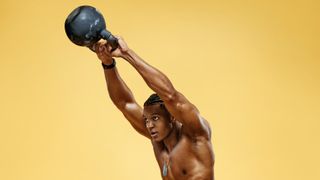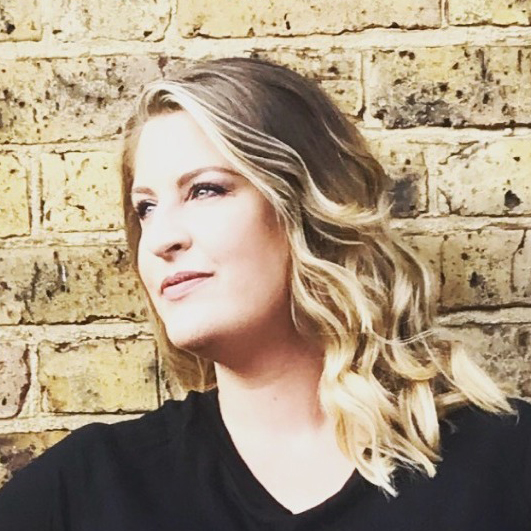Want to know the top 5 fitness moves everyone should do to feel fit, strong, and healthy? You’ve come to the right place!
Trust us, we know how overwhelming it can be to select a handful of moves for a workout when there are literally hundreds of variations of standard exercises to choose from. Just google the word ‘lunge’, for example, and you’ll discover multiple versions of this simple move, including what's called a 'dumbbell reverse lunge biceps curl-to-press' and the 'curtsy lunge with overhead press'.
But fitness doesn’t have to be complicated to get the best results.
I’ve been interviewing Olympic-level athletes and top PTs for over 15 years, and I believe it’s no coincidence that their top five movements for peak performance always include:
- a pull movement
- a push movement
- a hip-hinge movement
- a squat
- and a bit of heart-rate-raising endurance cardio
Just ask Hannah Frankson, a former professional triple jump athlete-turned-Peloton instructor who attracts the likes of Usain Bolt to her classes. "Alongside cycling and walking, I lift weights four-to-five times a week, keeping it simple with the main lifts: squat variations, deadlifts, shoulder presses, pull-ups, and press-ups. These moves ensure I support my body in everything I do, and that I can still do what I love when I’m 50."
But you don’t have to take her word for it. Read on to discover the benefits behind the top five fitness moves everyone should do and learn why these exercises alone are more than enough to keep you fit for life.
5 fitness moves everyone should do – Why functional fitness is key
If you want a strong, mobile, flexible body that moves efficiently and effectively, you need to be training functionally.
Functional exercises are based on specific human movement patterns including the hinge, squat, lunge, rotation, push, and pull (the latter two of which can be performed overhead or in front of the body), and these movement patterns translate into compound exercises that work multiple muscles and joints across the body at the same time.
Because functional exercises work many muscle groups at once - as opposed to isolation exercises that only work one muscle at a time - the intensity of your workouts will naturally increase, so you can expect faster muscle growth, a higher calorie burn and enhanced aerobic capacity, plus you’ll dramatically reduce the length of your workouts.

The kettlebell swing – a classic functional exercise
Equally, functional fitness can help you carry out everyday tasks and activities, which is why it’s so popular for people of all ages. Just take the example of walking while carrying a heavy load, and you’ll soon see that the squat, hip-hinge, pull, and push come into their own, because you must squat down and hinge forwards at the hips to reach the load, pull it towards you to pick it up, and finally push it to where you want to put it down. Oh, and cardio endurance will obviously help you with the walking part when you’re picking up your shopping bags and carrying them home.
Everyday benefits aside, the squat, hinge, push and pull movements also feature heavily in powerlifting exercises (think the squat, bench press and deadlift) and Olympic lifting moves (the snatch and clean & jerk are used in competition). Which goes to show that doing them regularly can boost your fitness for much more strenuous forms of exercise, not just carrying your shopping.
And finally - we can’t stress this enough - everybody needs to be incorporating some brisk walking into their lifestyle for a healthy heart and a host of other benefits we’ll dive into later. Because what’s more functional than walking?
5 fitness moves everyone should do – The ultimate workout to get fit for life
Now you know the five fitness movements everyone should do, let’s hone it down further. Below, we’ve selected our hero moves for each category: the Bodyweight Squat, the Deadlift, the Push-up, the Dumbbell Row, and Brisk Walking, but we’ll also show you a few other options in case you’re a beginner or more advanced exerciser.
All you need to do is select one move from the squat, hip-hinge, pull and push categories, then perform 2 to 3 sets in every workout to hit every muscle in your body before finishing off with some endurance cardio to work the heart and clear the head. Full-body workouts don’t get much simpler than that!
1. Bodyweight squat
In-depth – How to master squats
The bodyweight squat is one of the best strengthening exercises you can do for your lower body because it hits every major muscle group from hip to ankle, primarily targeting your quadriceps (front of the thigh), hip flexors and glutes, but also pulling in your hamstrings (back of the thighs) calves and core for assistance.
Bodyweight squats mimic the action of sitting down in a chair and standing up again – an action we perform many times a day – so it’s vital that you can perform this move safely and without assistance for daily living. Additionally, this multi-joint move helps to increase your stability and balance (essential if you want to avoid falling over as you get older) and improve your walking technique and posture while helping you burn fat.
While bodyweight squats might seem simple, many people can struggle to perform even a half-bodyweight squat properly if they have weaknesses or tightness in certain areas of the lower body (such as tight calves or lazy glutes), which can easily occur if you spend a lot of time sitting down.
2. Deadlift
In-depth – How to master the deadlift
Often called the ‘king of exercises', the deadlift should form a non-negotiable part of your fitness regime because it’s very ‘full body’, working your back, core, glutes and hamstrings in one movement. Deadlifts essentially involve lifting a weighted bar up and down, and its benefits easily transition from the gym floor into real life.
If you’re someone who tends to focus on your ‘mirror muscles’ i.e., those muscles on the front of your body such as the pecs, abs, and quads, or you spend lots of time sitting down, you should start incorporating deadlifts into your workouts straight away. The reason? Deadlifts work your posterior chain (all the muscles at the back of your body) to improve your posture and reduce your risk of lower back pain.
Aside from building a stronger back and core, you’ll also have stronger glutes and hamstrings which will help to increase your overall athleticism for other workouts and sports, and you’ll develop greater hip mobility, burn some serious calories (the more muscles you use, the harder you work), and raise your metabolism.
3. Push-up
In-depth – How to master push ups
The push-up is, unsurprisingly, one of the most popular bodyweight exercises around, not just because it challenges the muscles of the chest, triceps, shoulders and core when done correctly, but it’s also free to do, can be performed anywhere, and requires zero equipment.
Yes, push-ups are great for growing your upper body muscles, but they also come with a load of other benefits, too, from improved posture and stronger core stabilizer muscles (which can help you execute other exercises) to greater mobility and flexibility and strengthened wrist, elbow and shoulder joints that are more able to withstand the risk of injury.
If that’s not incentive enough, you might be interested to know that one 2019 study found that men who could complete at least 40 push-ups in under 30 seconds were at a significantly lower risk of cardiovascular problems such as heart attack and heart failure, compared with men who were only able to complete 10 or less. So, what are you waiting for? Drop down and give us 20!
4. Dumbbell row
If your workout includes pushing movements like Bench Presses and Press-ups, it’s essential that you balance these out with pulling movements if you want to have amazing posture, a super-strong back, and avoid looking like the Hunchback of Notre Dame.
There are many types of pulling movements you can choose from, but we love a Dumbbell Row. Why? Because you only need a dumbbell and a chair or weights bench to do them, and they hit your latissimus dorsi, posterior deltoids, teres major, trapezius, and rhomboids, which basically means they work your upper back and the rear of your shoulders, as well as activating other muscle groups such the biceps, the core (to help stabilize your torso), and your hand grip, which can help with other weighted exercises.
Dumbbell rows also have a wider range of motion compared to traditional barbell rows to enhance your shoulder and elbow mobility, and they can obviously help you with other daily activities like picking something off the floor or, er, rowing a boat. Not surprisingly, it’s a key move for athletes and lifters, but it’s also a great move for anyone who slouches at their desk because it activates the muscles that retract the shoulder blades.

5. Brisk walking
The list of scientifically-backed physical and mental health benefits to be enjoyed from brisk walking is huge, from better cardiovascular health, increased mobility and a lower risk of mortality to greater self-esteem, reduced anxiety and improved cognitive function.
Moreover, a recent 2022 study found that brisk walking can reduce our biological age, with data from over 400,000 people suggesting that a lifetime of walking at a faster pace could lead to the equivalent of a 16-years-younger biological age by midlife. And brisk walking also provides a very effective method of weight control, because the faster you walk, the harder you’ll work, and the more calories you’ll burn.
Walking at a faster pace where you become slightly breathless will also turn your walks into a ‘moderated intensity’ activity (for a more scientific approach, use a fitness tracker to check you’re working at 60 to 70 per cent of your maximum heart rate and ensure you’re working in the ‘moderate intensity exercise zone’). Do this, and your brisk walking will soon help you meet the current NHS guidelines of 150 minutes of moderate-intensity activity a week.



